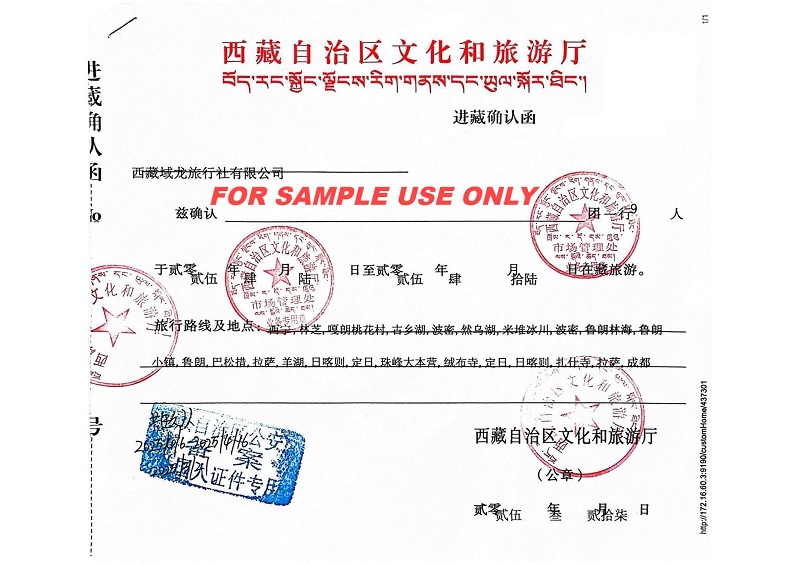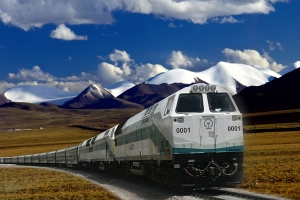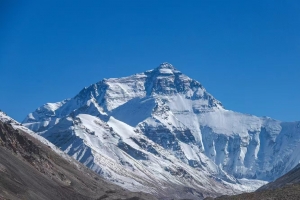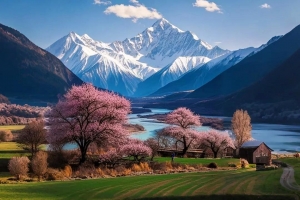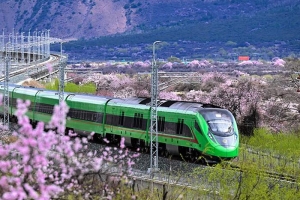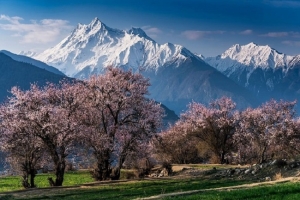Nestled high in the Himalayas, Tibet is a land of breathtaking plateaus, ancient monasteries, and an enduring spiritual mystique. For Australians seeking adventure and cultural depth, Tibet offers a truly transformative journey. However, due to its geographical, political, and cultural uniqueness, a trip to Tibet requires a good deal of preparation. This guide covers everything Aussies need to know before setting off to the “Roof of the World”.
Understanding Tibet and Why It’s Special
Tibet, officially known as the Tibet Autonomous Region (TAR) of China, sits at an average elevation of 4,500 metres above sea level. It shares borders with India, Nepal, and Bhutan and is home to some of the world’s highest peaks, including part of Mount Everest.
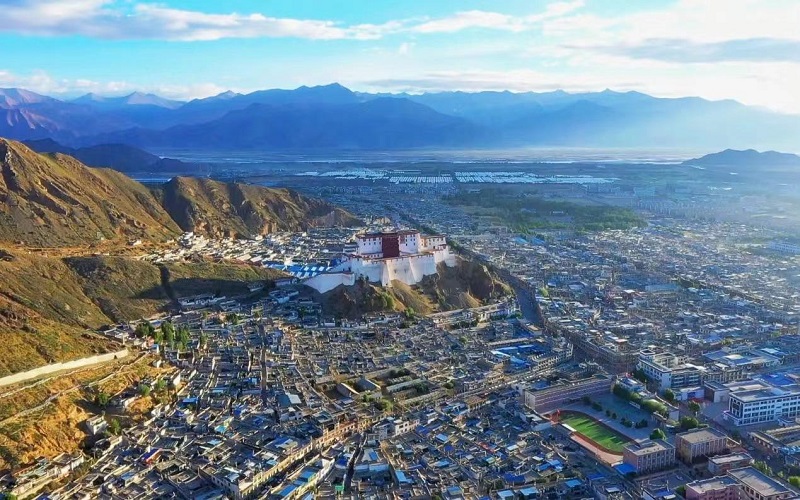
Overlook of Shigatse
Tibet’s distinct culture, deeply rooted in Tibetan Buddhism, and its remote, vast landscapes make it one of the most unique travel destinations in the world. Its capital, Lhasa, holds spiritual treasures like the Jokhang Temple and the Potala Palace—once the winter residence of the Dalai Lama.
Travel Documents and Permits
Travelling to Tibet is unlike going to most places in Asia. Australians must first obtain a Chinese tourist visa. Once that’s sorted, you’ll need a Tibet Travel Permit, which is only issued through authorised Chinese travel agencies. Independent travel is not allowed—tourists must join an organised group or have a private tour arranged through a registered agency.
If you plan to travel outside Lhasa to places like Mount Kailash or Everest Base Camp, additional permits such as the Aliens’ Travel Permit and Military Permit may be required. Your tour operator typically handles these on your behalf.
Getting There from Australia
There are no direct flights from Australia to Tibet. The most common route is flying to a major Chinese city such as Beijing, Chengdu, or Shanghai, and then taking either a connecting flight or the scenic Qinghai-Tibet Railway to Lhasa. Chengdu is the most popular transfer point due to frequent flights to Lhasa and fewer weather-related delays.
Expect long travel hours—flights from Sydney or Melbourne to China usually take around 11–13 hours, followed by a 2–4 hour domestic flight or a 22–40 hour train journey if you choose the railway option.
Time Difference and Jet Lag
Tibet operates on China Standard Time (CST), which is 2 hours behind Australian Eastern Standard Time (AEST) and 3 hours during Australian daylight saving time. The time difference is minor, so jet lag isn’t usually too brutal. However, the combination of high altitude and travel fatigue can still take a toll, so plan a rest day upon arrival in Lhasa.
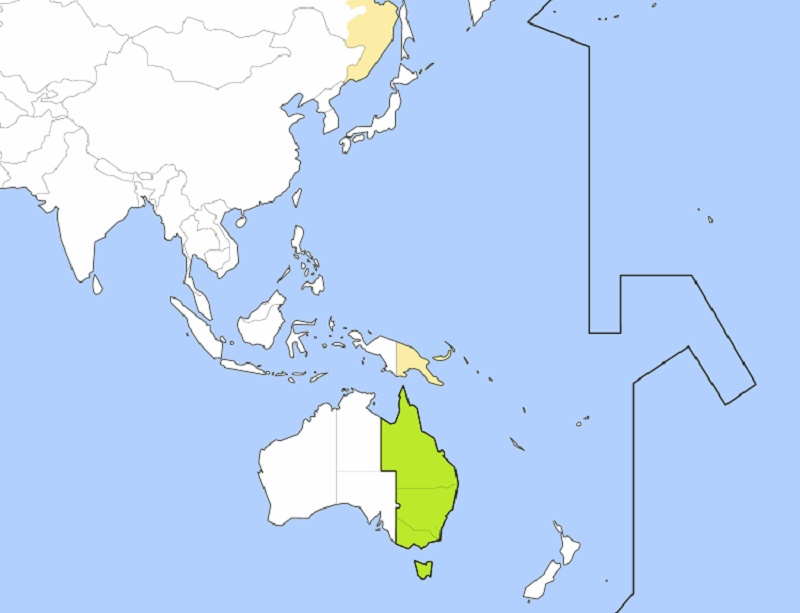
Time Zone of China and Australia
Acclimatising to the Altitude
The altitude is no joke. Even healthy, fit travellers can experience altitude sickness. Symptoms include headache, dizziness, nausea, fatigue, and shortness of breath. To reduce your risk:
-
Spend your first 2–3 days in Lhasa acclimatising before ascending higher.
-
Avoid alcohol and heavy exertion upon arrival.
-
Drink plenty of water and consider consulting your doctor about acetazolamide (Diamox) before your trip.
-
Go slow—your body will thank you.
What to Pack
Tibet’s weather is extreme, with strong sun, chilly nights, and dry air. Even in summer, temperatures drop drastically after sunset. Here’s what you’ll want in your backpack:
-
Warm layers (thermal underwear, fleece, insulated jacket)
-
Sunscreen (SPF 50+), sunglasses, and lip balm
-
Comfortable hiking shoes
-
A wide-brim hat or cap
-
Basic first aid kit and medications
-
Snacks (energy bars, trail mix)
-
Travel insurance with high-altitude coverage
It’s also polite to dress modestly when visiting religious sites: long sleeves, long trousers or skirts, and no revealing tops.
Cultural Etiquette and Respect
Tibetan culture is deeply religious and conservative. Observing local customs is vital for a positive experience.
-
Don’t touch people on the head, even children—it’s considered sacred.
-
Always walk clockwise around religious sites, prayer wheels, and stupas.
-
Photography is restricted in many temples—ask for permission.
-
Avoid discussing politically sensitive topics like Tibetan independence or the Dalai Lama with locals.
-
Smile, be polite, and learn a few Tibetan or Mandarin phrases—it goes a long way.
Language and Communication
Mandarin is the official language, but many locals speak Tibetan. English is spoken by tour guides and in some hotels but don’t expect it to be widely understood. A translation app can be very helpful. Signs are usually bilingual (Tibetan and Chinese), and some major tourist areas have English translations.
Currency and Payments
The official currency is the Chinese Yuan (CNY). ATMs are available in Lhasa and other major towns, but not in remote areas. Cash is king, so withdraw enough before heading out. Mobile payments like Alipay and WeChat Pay are common, but foreign cards rarely work with them. Carrying enough cash for your entire trip outside major cities is recommended.
Food and Drink
Tibetan cuisine is hearty and carb-rich—perfect for the cold climate. Staples include:
-
Tsampa (roasted barley flour)
-
Yak butter tea (an acquired taste!)
-
Momo dumplings
-
Thukpa (noodle soup)
Vegetarians may find limited options, so bring protein-rich snacks if needed. Drink only bottled or boiled water and avoid ice or uncooked food from street vendors to prevent stomach issues.
Best Time to Visit
The ideal times are April to June and September to early November. These months offer clear skies and milder temperatures. Avoid the monsoon season (July–August) when roads can be muddy and travel difficult, and winter (late November–March) unless you can handle sub-zero temperatures and travel disruptions.
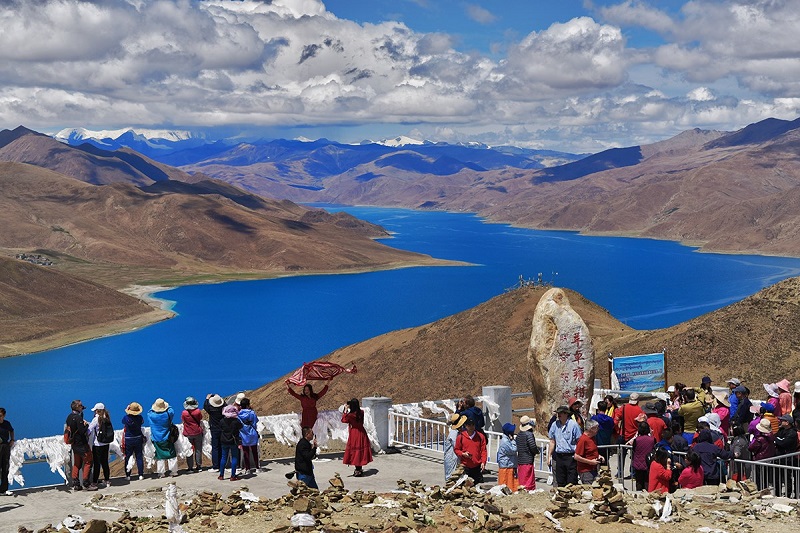
Yamdrok Lake
A Note on Politics and Safety
Tibet remains politically sensitive. The Chinese government monitors tourist activity closely, and restrictions can change at short notice. Protests, public gatherings, or political expressions (even symbolic ones) are not tolerated. That said, Tibet is generally very safe for foreign travellers, with low crime rates and a welcoming local population.
Journey to the Roof of the World
Tibet is not your average holiday destination—it’s a soul-stirring encounter with a people, land, and culture unlike any other. From the vivid prayer flags fluttering across high mountain passes to the quiet hum of monks in candle-lit halls, it leaves a lasting mark.
With a bit of planning, an open mind, and a respectful attitude, your journey from Australia to Tibet can be one of the most enriching experiences of a lifetime.

